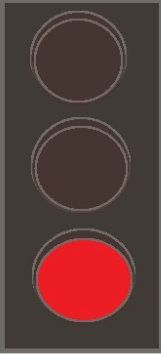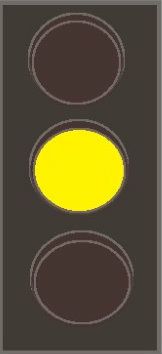INITIAL D (Inisharu Di), by Shuichi Shugeno. First published in 1995, and first published in North America in 2002.
PLOT: Takemi is a quiet, reserved boy growing up in a rural prefecture. His friends are total gearheads, obsessed with cars and illegal street racing, but Takumi really couldn't care less. He's more concerned with his delivery job for his father's tofu shop and trying to impress the pretty and flirtacious Natsuki. Things change when the Red Suns, a gang of street racers, come to town to race down the local mountain. They soon discover that Takumi's father was a legendary street racer in his day. What they do not know is that Takumi's father has been indirectly teaching Takumi everything he knows through the delivery job, and not even Takumi is aware of it. His friends certainly aren't, even when they coerce him into joining the Red Sun's race to replace a fellow driver. Now Takumi must put his skills and his trusty Toyoda Truello to the test.
STORY: You'd think this would be an exciting story, a sports manga-style storyline with plenty of exciting races. Well, you'd be right about the sports manga-style story, but that's about it. For a story about illegal street racing, this is a shockingly dull manga.
One of the biggest problems is that we don't get a lot of racing. Instead we get lots and lots of people TALKING about racing and cars and the technical details of both. The closest thing we get to a race is the crash that opens up a spot for Takumi. We don't get to see Takumi race until (presumably) the next volume, as this volume ends on a cliffhanger just as Takumi arrives. I know that a sports manga will have the cast explaining the rules and technique of their sport of choice, so I should have expected it to some degree, but surely Shugeno could have found SOME way to liven up these seemingly endless conversations.
Maybe it would have helped to have a more proactive lead. Takumi never seems to get excited over anything save for Natsuki. The most emotional and active we see him is in a flashback when he punches Natsuki's ex-boyfriend for bragging about banging her in the locker room. Midway through, you begin to wonder if Takumi was dropped on his head as a baby or fed a steady diet of tranquilizers because he is just THAT unresponsive and uninterested to the events around him. It's also something of a shame that the one thing that does rile him up is a girl who is obsessed with money and clearly using Takumi to two-time an unseen lover. Aside from those two, there are plenty of other characters, but there is absolutely nothing remarkable about them. They are either racers or interested in racing, and I honestly couldn't tell you a single thing about them otherwise.
Actually, that's probably the biggest issue with Initial D. There's a fairly large cast, but we learn little to nothing about them, so there's no one for the reader to become invested in. Thus, when they start droning on and on about car models and drifting technique, the reader has no one to help bring them into these conversations to make them interested or excited about those details, and you find yourself skimming along hoping that eventually someone will start racing to liven things up. The story of Initial D is ultimately talkative, toneless, and as plain as the tofu Takumi delivers.
ART: Now, surely Initial D could overcome its bland, boring writing and cast if its art could make the cast look good and the races exciting, right?
Oh, if only.
Initial D is kind of notorious for its weird character designs, where everyone has the same deformed jellybean head, heavy brows, and weird, thin, fishy lips, and their overall look is one that is both flat and stiff as a 2 x 4. What that means is that the whole cast is not only incredibly inexpressive, but many of the guys are indistinguishable outside of their hairstyles. The only thing appealing about the character designs (which is true for the artwork in general) is that they're drawn in this oddly sketch-like manner, with lots of thick, rough lines. It gives the artwork an unusual and unpolished quality that was not unpleasant to look at, but this quality can't save those bizarre character designs.
Now, all of those storytelling and artistic faults could be forgiven if Shugeno could at least make those brief bits of racing look attractive and convey the sense of speed and danger in them. Does it succeed at that? Well...kind of. That unpolished sketchy quality is still there, as these photorealistic cars drift through blurs of road and scenery. It does convey the speed of the races, but there's no sense of action or danger. The races feel just as detached as everything else. It doesn't help that these races are done at night in wooded areas, so you have these cars racing through big black blurs, and that's about as exciting as the backgrounds get. The composition is very mundane as well, so we don't even get any unusual angles or a lot of big, flashy panels to bring some visual variety. So, does the artwork compensate for the dull story? HELL NO! For the most part it's just as boring, and where it is not bland it is just plain bizarre.
PRESENTATION: Man, not even Tokyopop could get all that invested in this manga. Otherwise they might have bothered to put in some extras.
RATING:
 Manga fans would do very well to just let this one drift into obscurity and read something - ANYTHING - that is even the tiniest bit more exciting and better drawn.
Manga fans would do very well to just let this one drift into obscurity and read something - ANYTHING - that is even the tiniest bit more exciting and better drawn.This series is ongoing in Japan. This series was published in the USA by Tokyopop. 33 volumes were published, and all are now out of print.
You can purchase manga like this and much more through RightStuf.com!







